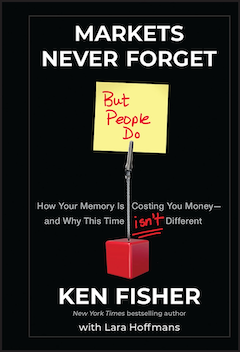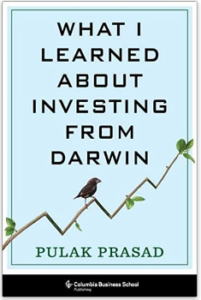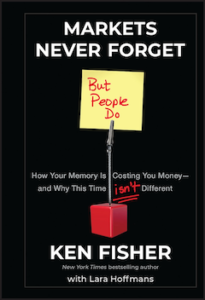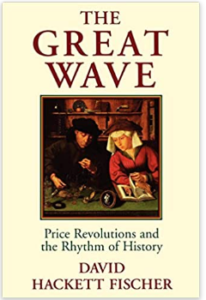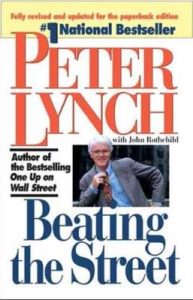By Aaron Anderson, 2010 (504p.)
This is an old book that I recently purchased used and is only available in hardcopy. It is an annotated compilation of Ken Fisher’s popular Forbes articles from 1984 to 2009. Reading it has turned me into a fan of Ken.

After recently enjoying Markets Never Forget, But People Do (2011) and Ken Fisher’s prior book, Debunkery (2010), I decided to tackle the Forbes compilation. I had already read The Only Three Questions that Still Count (2012), Beat the Crowd (2015), and How to Smell a Rat (2009), but that was some time ago. One thing I dislike about Ken’s style is that he uses dangerous words like “never” and “always” too often. His fixation with making market calls also turns me off, but I suppose that’s what “gurus” are expected to do. While I like his father better, I learned over time that Ken too is a giant, but in his own way. The record in this book shows that he has been right on the market a lot more often than he’s been wrong. I would not recommend buying the book unless you are an enthusiast. That said, I loved it so much that I typed out my 21 favorite passages below. They are timeless!
Regards,
Adriano
HIGHLIGHTED EXCERPTS
“The odds are overwhelming I will end up richer aiming for a good return rather than for a brilliant return. Folks who seek a killing often get killed.” – Sep 22, 1986 column
“Good money management starts with sticking to a good long-term strategy.” – June 15, 1987 column
“In the long term, America and the stock market have a wonderful future. As history as my guide, things clearly get better over the generations. Always have. Technology improves pervasively. I sure wouldn’t want to go back to any prior decade.” – Feb 19, 1990 column
“Sprinkled throughout my bearish columns of the past 15 months are long-term reminders to my readers that the Nineties will be a fine decade and that bearishness cannot be justified longer term. Yes, we are in a recession, but remember: Stocks always bottom out before the economy does.” – Dec 24, 1990 column
“As a green college graduate I was trained by my father to analyze quality. That was his obsession. He was an un-numbers man. No charts or tables. What interested him were the two “Ps” – people and position. Meaning, how good are the people? And how well is the firm positioned in its field. No matter how good the numbers looked, he wasn’t interested in a stock unless he saw exceptionally skilled and dedicated people running a firm with natural competitive advantages.” – July 23, 1990 column (titled Dad, You Were Right)
“I am never absolutely sure about anything. Portfolio strategy is an odds game.” – Feb 18, 1991 column
“Staying with this bull market, or any bull market, is sort of like hanging on to a horse when it’s bucking; it keeps trying to toss you off.” – Nov 25, 1991 column
“You can always find things wrong with the world. There is never a shortage of problems. Never has been. Nor a shortage of people who like to fixate on them. The only thing that really counts is: Will the problems hurt stock prices now?” – Mar 16, 1992 column
“In setting your cerebral scales to balance between bullish and bearish, never let your views of government, positive or negative, be more than 10% of the weight of your thinking. Other things should weigh heavier, always.” – May 10, 1993 column
“What distinguishes highly successful investors from everyone else is what the smart ones don’t do as much as what they do. Really sharp investors don’t get sucked in by the trend du jour.” – Dec 20, 1993 column
“A simple market truism: Old arguments, even correct ones, don’t move markets. Something new must arrive – a surprise or catalyst, because it is a surprise, and only that, which moves markets.” – Feb 14, 1994 column
“No one sets out deliberately to buy a stock or mutual fund at the top and panic-sell at the bottom, but it happens all the time.” – Aug 29, 1994 column
“Stay fully invested in good stocks and don’t try to time the market.” – Oct 17, 1994 column
“Avoiding stocks just because the market isn’t cheap is a dumb idea. The market rises just as often when it is “not cheap” as when it is. There’s a lot of ground between not cheap and overpriced.” – Feb 13, 1995
“Predicting tops is not a part of my investing method. I don’t even try. People who forecast market tops depend on foreseeing forces that will both materialize and make the market tumble. If the forces don’t appear, neither does the top. And even if they do appear, there may be other, unforeseen events that arise and offset the negative developments they did anticipate.” – Jun 17, 1996 column
“The difference between a few months from now and immediately can feel near infinite as the last leg of a bear market warps our perceptions.” – Nov 12, 2001 column [4 months from the historic bottom]
“It is pointless to worry about what others worry about. If you do base market judgments on those worries you will be wrong more often than right. If others worry about something, you just don’t have to because they are doing it for you. You should worry about something else – namely, what they’re not worried about.” – May 26, 2003 column
“Real bubbles are never commonly referred to as bubbles in the press until after they’ve burst. When something is commonly labeled a bubble that hasn’t burst that means there is fear of it. There is little or no fear of a real bubble. Fear, priced into markets, reduces risk.” – Jul 4, 2005 column
“Election outcomes don’t affect markets the way you’d expect them to. In inaugural years we discover that Democratic presidents are phonies and never meant most of what they said in their populist, anticapitalistic campaigns. Inaugural years for Republican presidents remind us that they are phonies, too; they don’t do much for the economy or for investors.” – May 19, 2008 column
“In a bubble, anyone who argues pessimistically is seen as crazy. In today’s reverse bubble, when you argue optimistically you are seen as the crazy one. Bubbles are hard enough to see, but reverse bubbles are completely invisible.” – Sep 29, 2008 column
“The stock market is a discounter of known information. It is not a barometer of the current state of the economy, but a guess about where the economy (and corporate profits) will be 6 to 24 months in the future. Stock market bottoms happen, and then stocks jolt upwards, while the economy keeps getting worse – sometimes by a lot and for a long time.” – Jan 12, 2009 column



